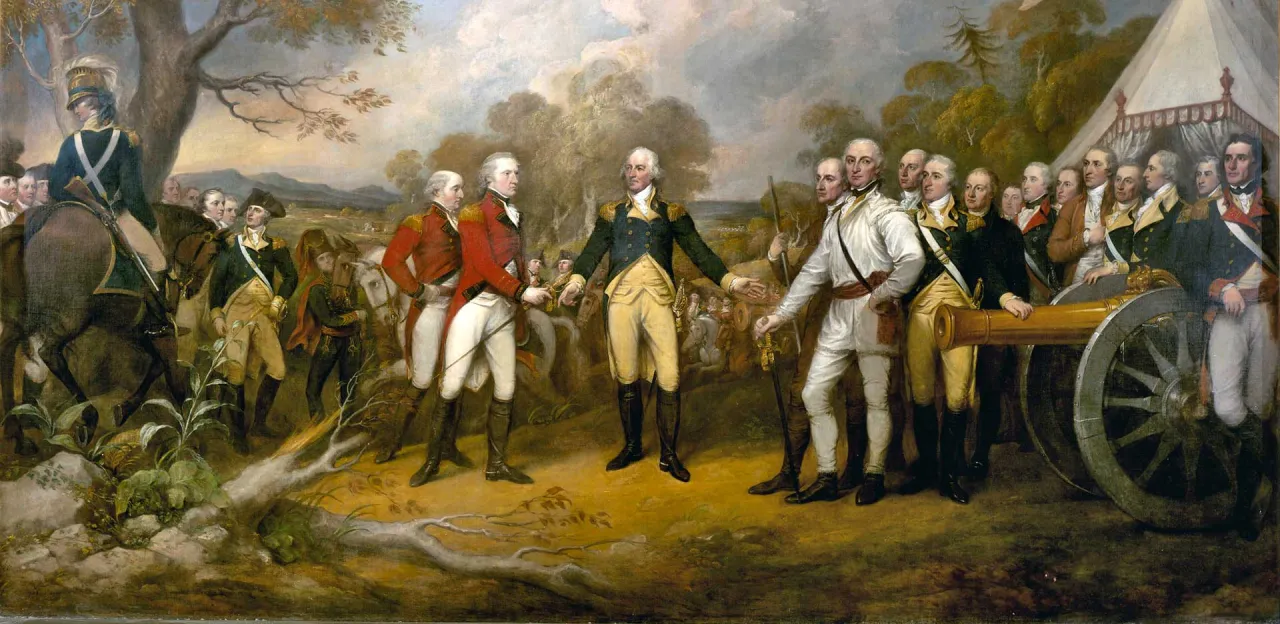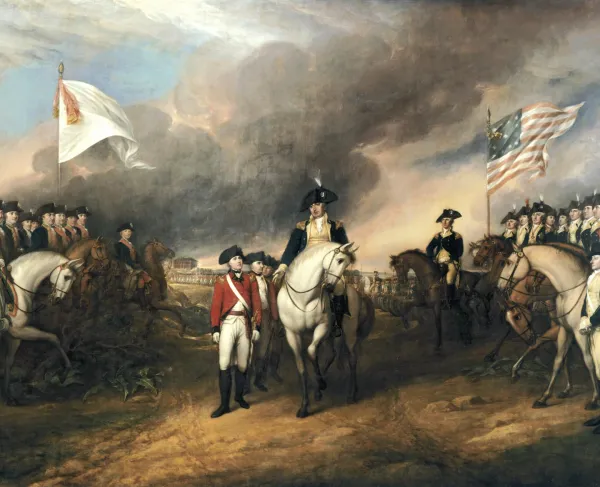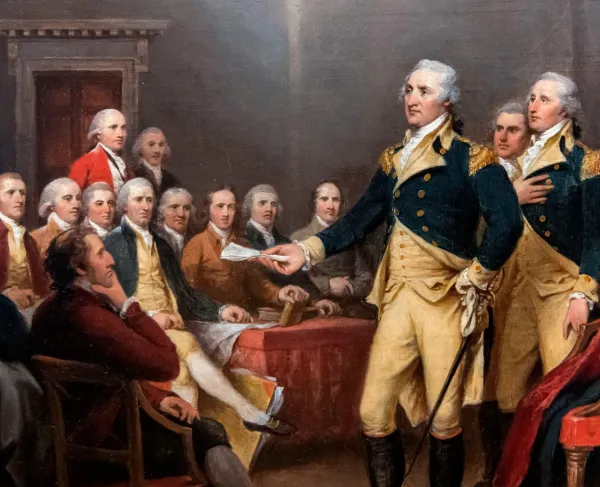Saratoga

In the fall of 1777, British strategy called for a three-pronged attack coordinated by three separate British armies converging near Albany. For a variety of reasons, the only British force that got close to the rendezvous point was General John Burgoyne’s force of 7,500 men, including German Hessians, moving south from Canada. By mid-September, Burgoyne’s force reached the northern outskirts of the small village of Saratoga.
General Horatio Gates commanded the Northern Department of the Continental Army. He was supported by General Benedict Arnold and by Col. Daniel Morgan, leader of 500 crack shot Virginia riflemen. Gates' army numbered 8,500 strong. To disrupt the British advance south, Gates ordered his men to erect defenses on the crest of Bemis Heights, which was part of a series of bluffs from which both the Hudson River and the paralleling road could be seen. From there, American artillery had the range to hit both the river and the road. In order to attack, the British would have to use the road, as the forest and vegetation to the east were too dense to permit effective troop movements.
The Americans also erected a fortified wall a little less than a mile from Bemis Heights. The wall extended about three-quarters of a mile, creating a line shaped like a large "L". Twenty-two cannons were emplaced behind the wall, providing the Americans with ample artillery cover. It would be a difficult position for the British to crack.
On September 19, 1777, Burgoyne divided his army, numbering about 7,500, into three columns. He wanted to use each column to probe American defenses.
Col. Daniel Morgan's light infantry engaged with the center column on September 19 near the farm of John Freeman. It was a hotly contested fight, very fierce at times, with the field changing hands several times. By evening, the British (reinforced by 500 German Hessians) held the field, but the action had blunted their forward motion. Hoping to be reinforced by Clinton from New York City, Burgoyne chose to dig in.
As food dwindled, the army was reduced to half-rations and literally stuck in the middle of the New York wilderness. The British began looking for ways to escape.
While the British remained stuck, the American army grew to 13,000 strong. Receiving intelligence that Burgoyne's men were on the move, they attacked the British position, forcing them back. In the ensuing fight, popular British General Simon Fraser was mortally wounded, picked off by one of Morgan’s riflemen.
The British had erected their own defensive redoubt behind their forward position, the Balcarres Redoubt. It was formidable and well-defended, and the British retreated inside of it and held off the pursuing Americans.
Another redoubt, the Breymann Redoubt, was erected several hundred yards away. It was not nearly as impressive as the Balcarres Redoubt, and was lightly manned by only 200 German soldiers, giving the attacking Americans overwhelming numbers and superior firepower.
American General Benedict Arnold galloped into the fray and rallied the Americans in the attack on the Breymann Redoubt. A fellow officer in the Continental Line said that Arnold “behaved more like a madman than a cool and discreet officer.” During this engagement he sustained a serious wound in his left leg.
By early evening, the Americans secured possession of the Breymann Redoubt and gained a tactical advantage, as it was the far right flank of the British lines. From here the Americans could easily get behind British lines. Realizing their plight, the British pulled back into their Great Redoubt near the river and held out for several weeks.
On the morning of October 8, Burgoyne’s army attempted to escape north, but a cold, hard rain forced them to stop and encamp near the town of Saratoga. Cold, hungry, and weary, they dug in and prepared to defend themselves, but within two days the Americans had them surrounded.
After a week's negotiation, Burgoyne's army surrendered on October 17, 1777. The British had been humiliated. The Americans had proved their worth on the battlefield against the greatest army in the world, lifting flagging American morale, inspiring the cause of independence further, and convincing the French and later other European nations to back the new United States. A formal Treaty of Alliance was signed with the French and the balance of the war tipped in favor of the Americans.





